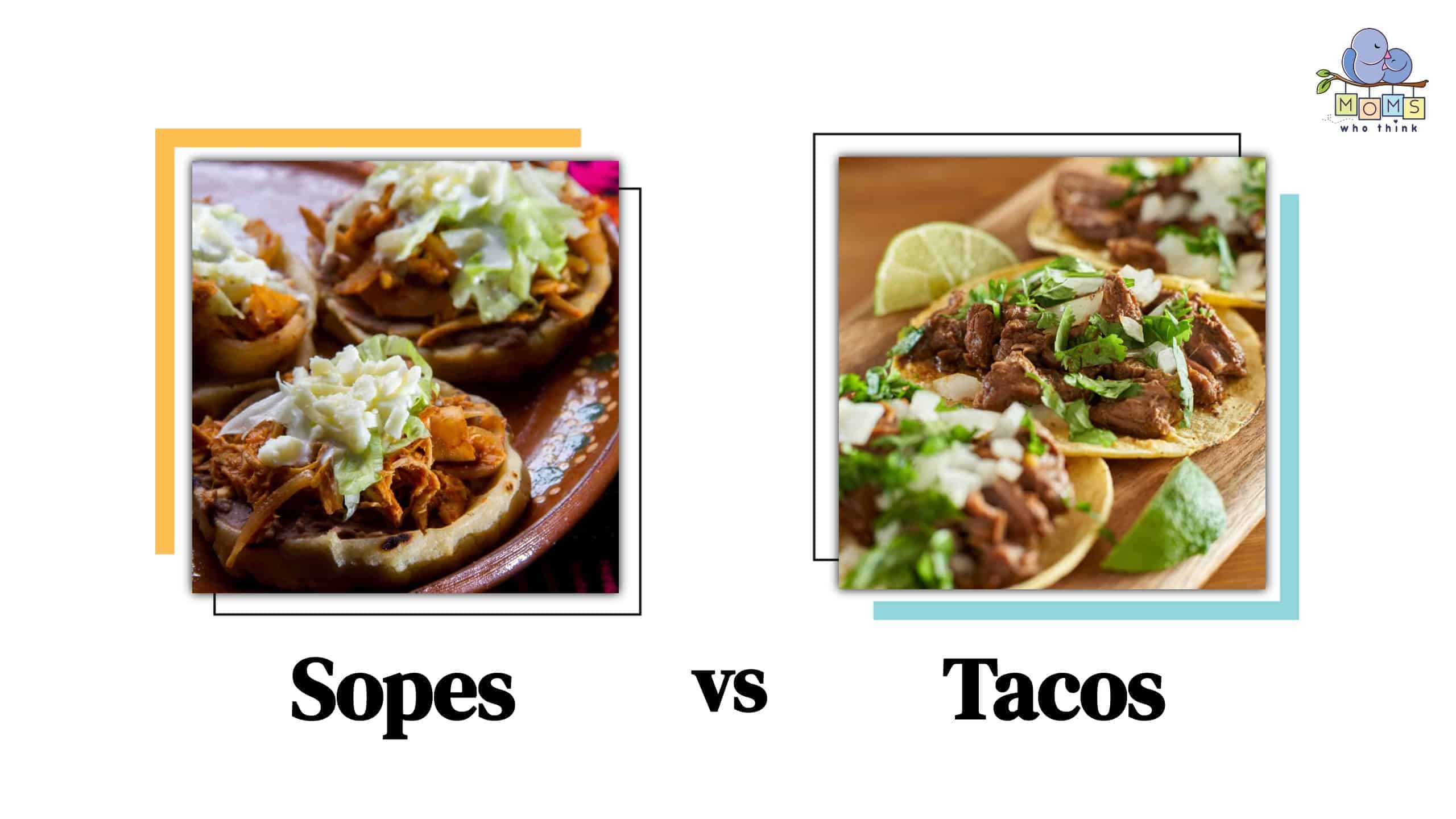Today, we explore the differences between two beloved Tex-Mex dishes: sopes and tacos. Sopes and tacos have similar elements, but they're distinct dishes with very unique histories. Uncover the secrets behind making delicious sopes and tacos, discuss their nutritional differences, address the question of whether they are the same thing, explore their substitutability, and discover alternative options for each item.
Are Sopes and Tacos the Same Thing?
Let's clear up any confusion right away. Sopes and tacos may share some similarities, but they are not the same thing. While both are Mexican dishes featuring a tortilla-dough base, they differ in their preparation, shape, and toppings.
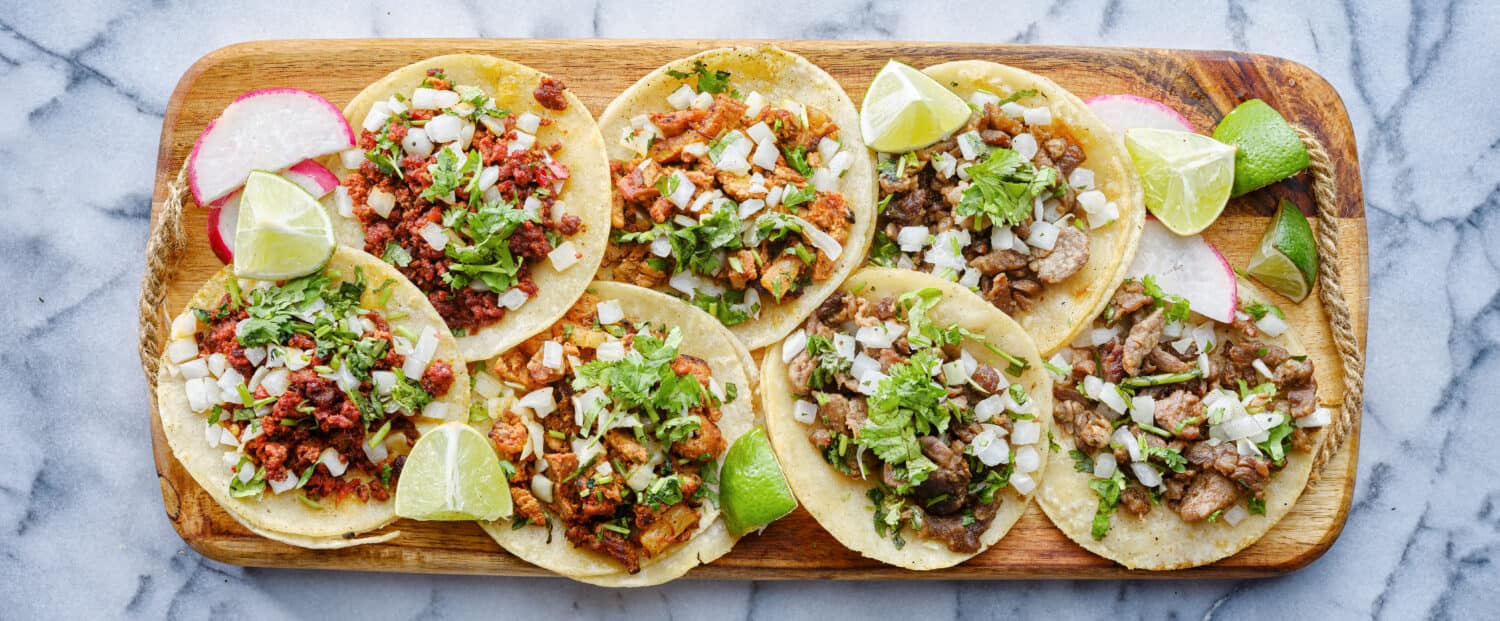
©Joshua Resnick/Shutterstock.com
Shape and Structure Differences
- Sopes: Sopes are thicker and smaller compared to tacos. They are made with corn masa dough shaped into a small, round disk with raised edges, forming a shallow cup to hold the toppings. Think tartlet shell, but made from masa dough. (They're actually more closely related to tostadas from a structural standpoint.)
- Tacos: Tacos, on the other hand, are typically made with soft or hard-shell tortillas that are folded or rolled to contain the fillings. They can come in various sizes and shapes, such as soft corn tortillas, crispy taco shells, or flour tortillas. (We're corn tortilla aficionados over here.)
Nutritional Differences
When it comes to nutritional qualities, there are a few notable distinctions between sopes and tacos. Here's a breakdown of the key differences you should consider when choosing a meal for your family:
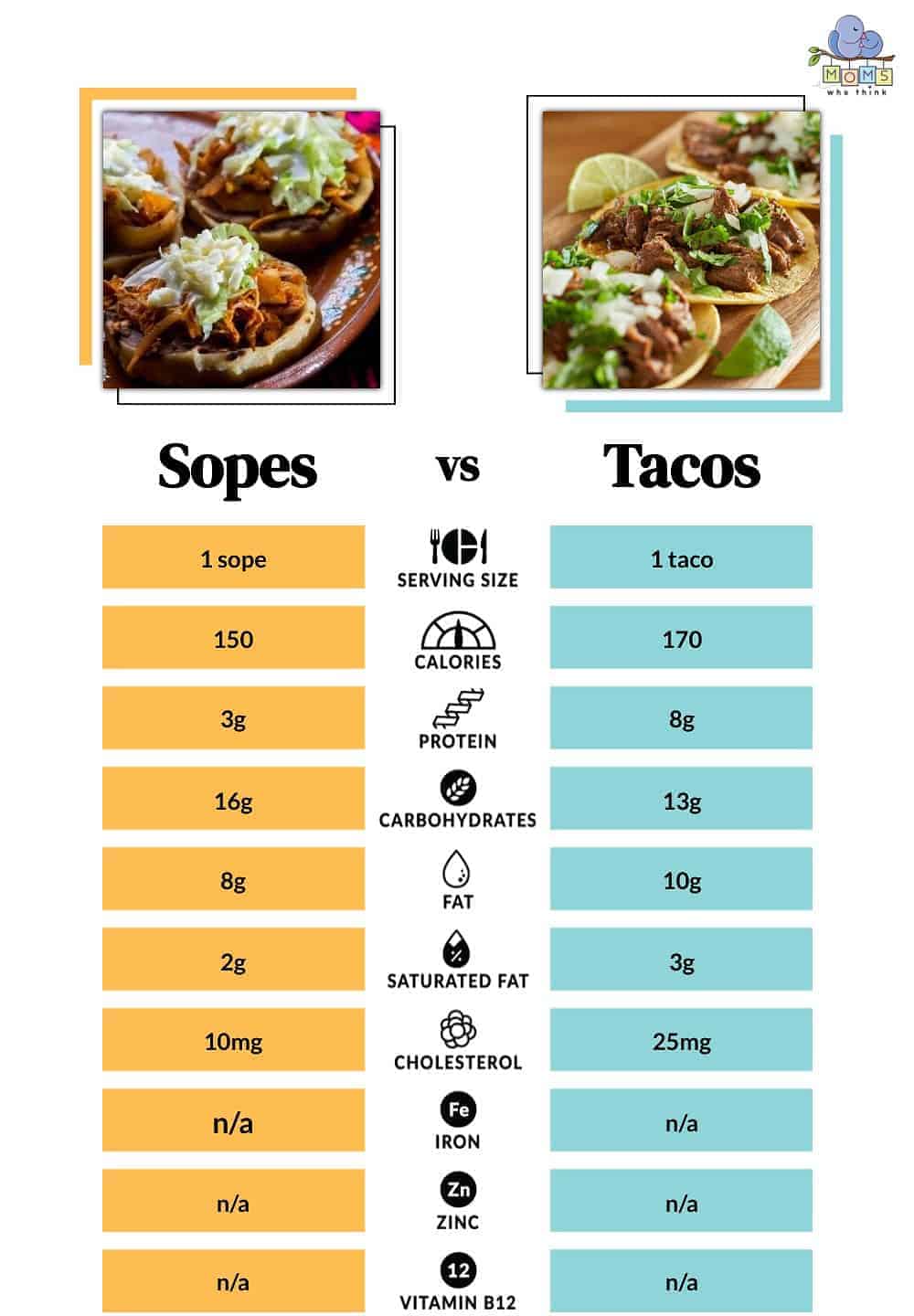
Corn Masa vs. Flour Tortilla
Sopes are traditionally made from corn masa, a dough made from dried corn kernels that have been soaked and cooked in an alkaline solution during a process called nixtamalization. This process enhances the nutritional value and digestibility of corn.
Tacos can be made using corn tortillas or flour tortillas. Corn tortillas tend to be lower in calories and fat, while flour tortillas may offer a slightly higher protein content.
Topping Variations
Sopes: Sopes are often topped with an array of ingredients, including refried beans, shredded meats, cheese, lettuce, salsa, guacamole, and sour cream. These toppings can vary in terms of calorie content, depending on preparation methods and portion sizes. It really comes down to personal preference.
Tacos: These beauties also offer versatile filling options like grilled meats, marinated vegetables, beans, cheese, salsa, and a variety of fresh herbs. The calorie content of tacos can also vary significantly depending on the fillings and portion sizes. Traditional Mexican tacos have a protein, and are topped with raw onion and cilantro
Substitutability and Other Swap Options
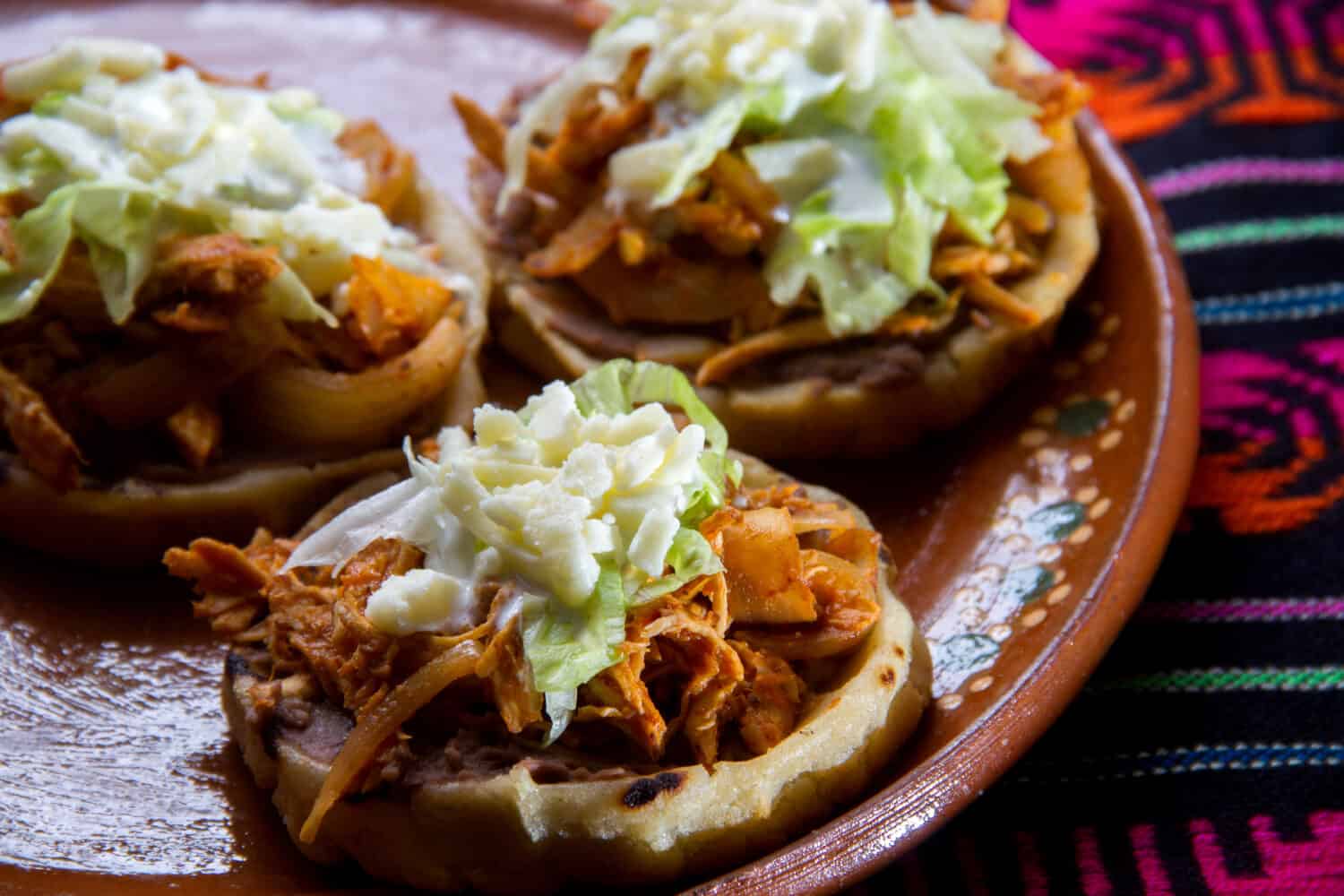
©Guajillo studio/Shutterstock.com
Now, the big question: Can you substitute sopes for tacos or vice versa? While each dish has its distinct appeal, they are similar enough that they can be substituted for one another (with some minor modifications). And because they belong to the large, glorious family of Tex-Mex cuisine, you can substitute a bunch of other dishes for either, too. Here's what that could look like:
Substituting Sopes
If you don't have sopes on hand but crave a similar experience, consider these alternatives:
- Tostadas: These are flat, crispy tortillas that can be topped with various ingredients similar to sopes.
- Mini Tortillas: Use small corn tortillas or even slider-sized buns to create mini versions of this dish. You'll just want to load them up with all of your favorite toppings.
Substituting Tacos
If you're in the mood for tacos but don't have the exact ingredients, fear not! Here are a couple of alternatives to satisfy your taco cravings:
- Lettuce Wraps: Swap out the tortilla for large lettuce leaves, such as romaine or butter lettuce, to create a refreshing and low-carb option.
- Tortilla Bowls: Bake or fry tortillas in the shape of a bowl to create a vessel for your taco fillings. Pro Tip: Use an inverted muffin tin and smaller tortilla rounds to miniaturize this concept.
History and Origin
Sopes
The origins of sopes can be traced back to pre-Columbian times, when the Aztecs and other indigenous peoples of Mexico would eat small tortillas topped with beans and chili peppers. Over time, sopes evolved to include a wide range of toppings and fillings, reflecting the diverse regional cuisines of Mexico.
In the United States, sopes have become increasingly popular in recent years. This can be at least partially credited to the continuing growth in popularity of Mexican cuisine. Today, you can find sopes on the menus of many Mexican restaurants across the country, as well as in the homes of countless Mexican-American families. They're one viral #foodtok video away from being an American household staple.
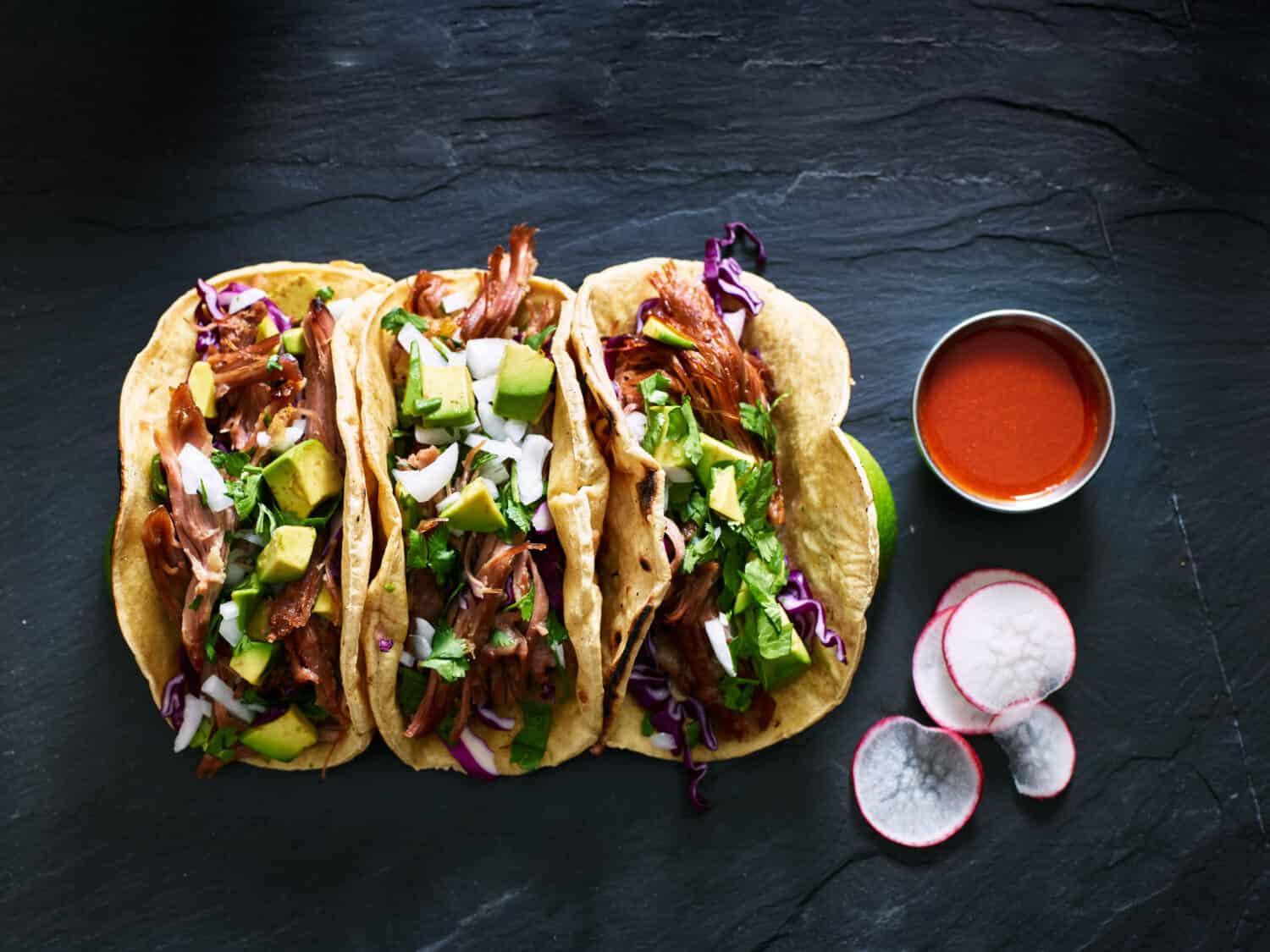
©Joshua Resnick/Shutterstock.com
Tacos
Tacos are a beloved dish in both Mexican and American cuisine. The history and origin of tacos can be traced back to the indigenous people of Mexico, who would wrap food in tortillas made from corn. The word “taco” actually comes from the Nahuatl language, which was spoken by the Aztecs.
The dish gained popularity in the United States in the early 20th century, when Mexican immigrants brought their cuisine to the country. Initially, tacos were considered a “street food” and were sold by vendors in Mexican-American neighborhoods. However, as Mexican cuisine gained popularity in the US, tacos became a staple in many restaurants and fast food chains.
Today, tacos are one of the most iconic global cuisines. You can find them all over the world, from fancy restaurants to food trucks. They are incredibly versatile and we encourage you to fill them with a variety of flavors and textures. There are no limits on the components they're capable of highlighting, including beef, chicken, fish, or vegetables.
Recipes
Honestly, you can't go wrong with either dish. They're both delicious, and even though they're less common, sopes are just as deserving of the love and affection that Americans bring to the table for tacos.
Taco Recipes
Print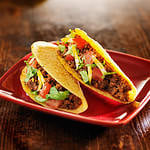
Pinto Bean Tacos
- Yield: Serves 4
Ingredients
8 taco shells
1 (15 ounce) can pinto beans, rinsed and drained
½ cup reduced-sodium tomato sauce
1 (4 ounce) can diced green chili peppers, drained
1 teaspoon chili powder
¼ teaspoon dried oregano, crushed
¼ teaspoon ground cumin
1½ cups shredded lettuce
1 medium tomato, chopped
½ cup shredded reduced-fat cheddar cheese
Instructions
1. Heat taco shells according to package directions.
2. Meanwhile, in a medium saucepan, combine pinto beans, tomato sauce, chili peppers, chili powder, oregano, and cumin. Bring to boiling. Reduce heat; simmer, uncovered, for 5 minutes, stirring occasionally. Mash beans slightly, if desired.
3. Spoon bean mixture into taco shells. Top with lettuce, tomato, and cheese. Serve with salsa, if desired.
Nutrition
- Serving Size: Per serving
- Calories: 276
- Sodium: 585mg
- Fat: 8g
- Saturated Fat: 2g
- Carbohydrates: 40g
- Fiber: 9g
- Protein: 15g
- Cholesterol: 10mg
- Tostadas vs. Tacos: The Easiest Weeknight Dinner Winner
- Tacos vs. Burritos: Which is the Better Family Meal?
- Stir-Fried Tacos Recipe
- Tater Tot Tacos Recipe
Sopes Recipes
- Salsa Roja vs. Salsa Verde: Which is Best for Sopes?
- Cotija Cheese vs. Queso Fresco: The Best Tex-Mex Topping
- Best Sopes Recipe (Delish)
So we now have a clearer understanding of the differences between sopes and tacos. A quick review: While we characterize sopes by their thicker base and cup-like shape, tacos consist of a tortilla wrapped around their fillings. Both offer versatility in their fillings, while sopes' base is always a masa corn mixture, and tacos always use a tortilla of some sort. Remember, these delightful dishes are not interchangeable, but you can explore alternative options like tostadas, mini tortillas, lettuce wraps, or tortilla bowls to satisfy your cravings. So, embark on your own culinary adventures around your family dinner tables, experimenting with the flavors and textures that make Mexican cuisine so vibrant and delicious while ensuring everyone has something to love on their plate.
